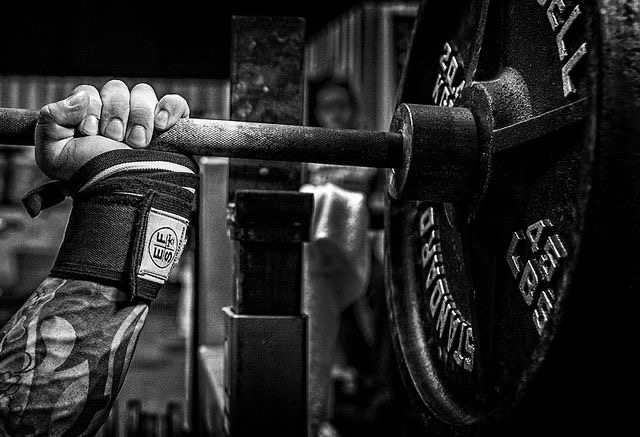Are Stick Mobility Really Worth It? My Honest opinion!

In the ever-evolving world of fitness, new tools and trends continuously emerge, each promising to enhance our workouts and improve our overall well-being. One such trend is stick mobility, a system that uses flexible sticks to aid in stretching and mobility exercises. But are these tools truly worth the investment? In this blog post, we’ll explore the claims made by stick mobility advocates, examine their effectiveness, and suggest some low-cost or free alternatives that might provide better results.
What Stick Mobility Claims to Provide
1. Improved Flexibility
One of the primary benefits touted by stick mobility proponents is enhanced flexibility. By using a stick to assist with stretches, users are said to achieve greater range of motion in their muscles and joints. The stick serves as a tool for leverage, helping individuals maintain proper form while stretching.
2. Increased Body Awareness
Stick mobility exercises emphasize alignment and control. The presence of the stick encourages users to focus on their body positioning, which can enhance proprioception—an awareness of the position and movement of the body. This heightened awareness can lead to better overall movement patterns in workouts.
3. Injury Prevention
Another common claim is that stick mobility can help reduce the risk of injury. By promoting proper movement mechanics and flexibility, users may be less likely to experience strains or sprains. This preventative aspect is particularly appealing to those who engage in high-impact or repetitive sports.
4. Versatile Workouts
Stick mobility is often marketed as a versatile tool that can be used for various exercises. Users can engage in dynamic stretches, static holds, and even some strength training movements. This versatility makes it suitable for individuals of different fitness levels.
5. Recovery Enhancement
Proponents also claim that stick mobility can aid in recovery from workouts. By focusing on stretching and mobility, users may experience reduced muscle soreness and improved recovery times.
The Cost Factor
While stick mobility tools offer several potential benefits, one of the most significant drawbacks is their price. High-quality mobility sticks can range from $50 to over $100. For those on a budget, this investment may seem steep, especially considering that there are numerous low-cost or free alternatives available.
Effective Alternatives to Stick Mobility
1. Dynamic Stretching
What It Is: Dynamic stretching involves moving parts of your body through their full range of motion in a controlled manner. Unlike static stretching, which holds positions, dynamic stretching prepares your muscles for activity.
Benefits:
- Increases blood flow to muscles.
- Enhances mobility and flexibility.
- Engages the entire body, improving coordination.
How to Implement:
Before your workout, incorporate movements such as leg swings, arm circles, and torso twists. These exercises can help prepare your body for more intense activities without the need for any equipment.
2. Bodyweight Exercises
What It Is: Bodyweight exercises utilize your own weight as resistance, allowing for a variety of movements that can improve strength and flexibility.
Benefits:
- Requires no equipment and can be done anywhere.
- Builds strength while promoting flexibility.
- Encourages functional movement patterns.
How to Implement:
Incorporate exercises such as lunges, squats, push-ups, and shoulder presses into your routine. Focus on controlled movements that maximize your range of motion to enhance mobility.
3. Resistance Bands
What It Is: Resistance bands are elastic bands used for strength training and rehabilitation. They provide resistance throughout a range of motion, making them effective for both warm-ups and flexibility work.
Benefits:
- Affordable and portable.
- Versatile for a variety of exercises.
- Provides resistance while also enhancing mobility.
How to Implement:
Use resistance bands for exercises like banded squats, shoulder stretches, and hamstring stretches. They can help you achieve similar benefits to stick mobility at a fraction of the cost.
4. Foam Rolling
What It Is: Foam rolling is a self-myofascial release technique that helps relieve muscle tightness and improve flexibility.
Benefits:
- Reduces muscle soreness and tightness.
- Improves blood flow and recovery.
- Can be done at home with minimal investment.
How to Implement:
Incorporate foam rolling into your warm-up or cool-down routine. Focus on areas that feel tight or sore, rolling slowly to help release tension.
5. Yoga and Pilates
What It Is: Both yoga and Pilates emphasize flexibility, strength, and body awareness. These practices can be done at home or in a group setting and often require like yoga mat or even that’s not compulsory.
Benefits:
- Promotes flexibility, strength, and relaxation.
- Encourages body awareness and control.
- Can be adapted for all fitness levels.
How to Implement:
Follow online classes or apps that offer yoga and Pilates sessions. Many resources are free or available at a low cost, making them accessible to everyone.
Conclusion: Smart Investments in Your Fitness Journey
Stick mobility tools offer certain benefits, particularly in terms of flexibility and body awareness. However, their high price tag raises questions about their value, especially when numerous effective alternatives are available for little to no cost.
Dynamic stretching, bodyweight exercises, resistance bands, foam rolling, and yoga are all excellent ways to enhance mobility and flexibility without breaking the bank. By incorporating these practices into your routine, you can achieve similar, if not better, results.
Ultimately, the best approach to mobility and flexibility is one that fits your lifestyle and budget. Consider your fitness goals, explore different options, and invest in methods that offer the greatest return on your investment in health and well-being.




